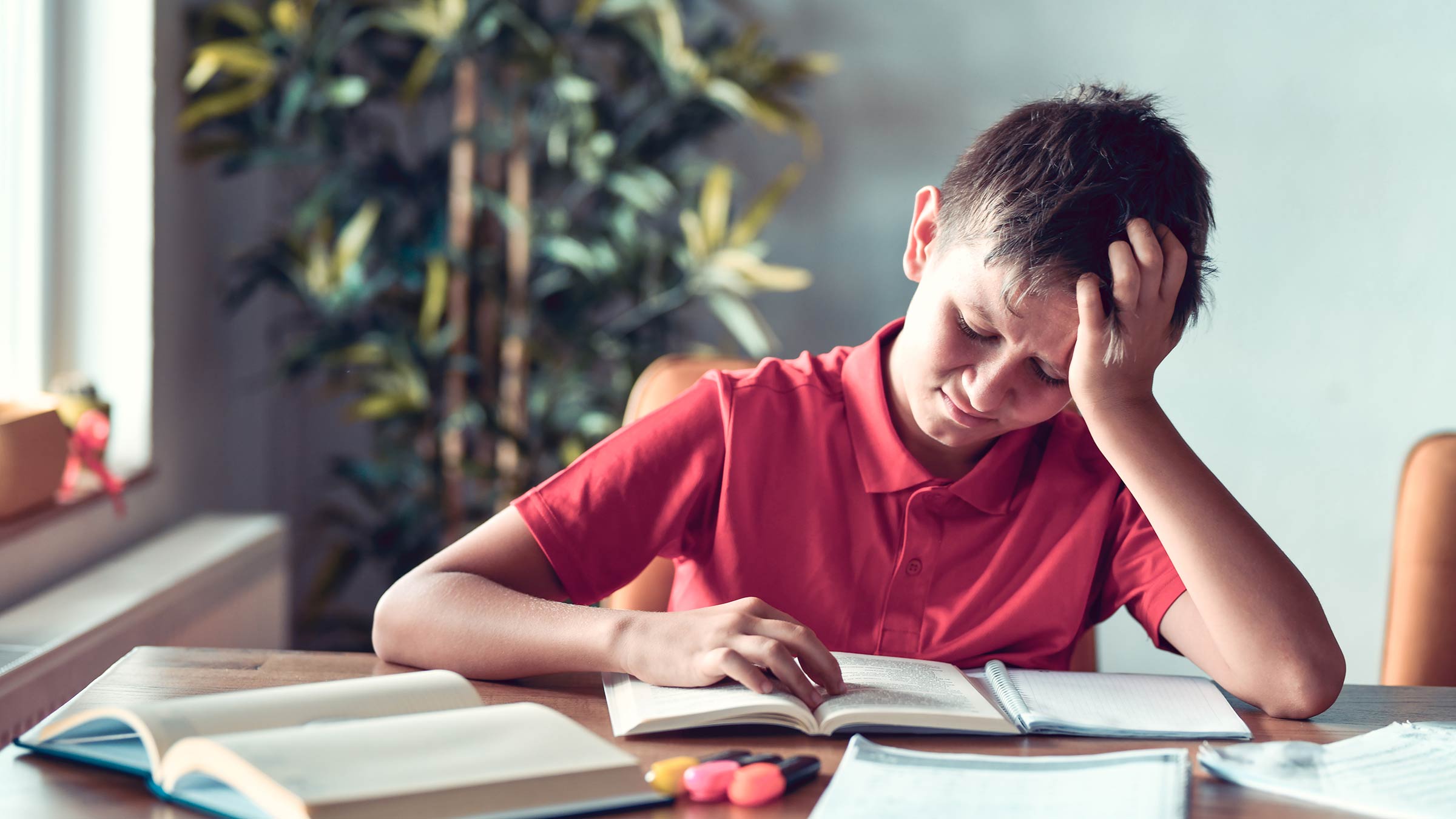
If you’re unable to see clearly, it’s harder to do well in a classroom or on a sports field.
As children advance in school, their eyes are challenged more to read laptops and smaller print and to complete an increasing amount of homework. Having trouble seeing either close up or far away can make it tough for children to do schoolwork and pay attention in class.
They might get frustrated but never mention the problem, because they assume that’s how everyone sees the board or their laptop. They might get headaches.
How does vision affect reading?
It’s important to find out if your child has a vision problem, many of which can go unnoticed for a while. Research has shown that some vision problems are associated with reading difficulties.
The American Optometric Association recommends that children receive an eye exam as infants, as preschoolers, then every year as school-aged children.
Their eyes can be tested at any age. It’s commonly thought that a child needs to know their letters to have an eye exam, but tests are available to check even babies’ vision. Young children can identify shapes to find out how well they can see.
What are the most common vision problems for children?
Refractive errors
These are the most common eye problems. They happen when the shape of the eye prevents light from focusing properly on the retina, a light-sensitive layer of tissue at the back of the eyeball. Refractive errors can lead to hazy, blurry or double vision.
- Nearsightedness – can cause objects far away to appear blurry
- Farsightedness – can cause objects nearby to appear blurry
- Astigmatism – can cause difficulty seeing near and far.
Problems with how the eyes work together
If you have “convergence insufficiency” your eyes drift outward as you look at objects close up, such as when reading or doing schoolwork. That can lead to blurry vision, double vision and headaches. And it can make it difficult for you to keep your place on the page when you’re reading.
Difficulty focusing
This causes a problem with how clearly you can see things up close.
Lazy eye
Lazy eye, which is also called amblyopia, is when vision in an eye is reduced because the brain isn't using that eye properly. The eye looks normal, but it's not being used normally because the brain is favoring the other eye. Treatment usually includes glasses and often includes other treatment, such as wearing a patch over the better eye.
What are symptoms of eye problems in children?
In school-aged kids, symptoms of vision issues can include:
- Blurred vision
- Squinting
- Frequently losing your place when reading and having to re-read
- Frequently losing concentration when reading
- Feeling like you read slowly
- Feeling sleepy when reading
- Seeing double
- Headaches
- Sore, tired or uncomfortable eyes
- Eye rubbing or blinking a lot
- Avoiding reading
- Tilting the head to one side
- Holding reading materials close to the face
- An eye turning in or out
What causes farsightedness and nearsightedness?
Farsightedness: Your eyeball is too short. As a result, light is focused behind the retina instead on the retina. So, objects in the distance are clear, but objects close up may be blurry.
Nearsightedness: Your eyeball grows too long. It’s more common than farsightedness in older school-aged children. However, preschoolers are more likely to be farsighted than nearsighted.
If your child needs glasses early on, does that mean they’ll always need glasses or contacts?
If your child has moderate to severe farsightedness, it might decrease somewhat, but it tends to continue to require correction.
Nearsightedness tends to progress year to year, up to the teenage or young adult years.
Are there eye exercises that improve vision?
Only do exercises that are appropriate for your eyes. Eye exercises can help with some eye problems, such as with convergence insufficiency, and those exercises are best done with a therapist under the supervision of an eye doctor.
There’s no evidence to support that eye exercises for nearsightedness or farsightedness are effective.
What else to watch for in children
Regular eye exams for your child in preschool and before kindergarten are important to ensure they have adequate vision for school, as many eyesight issues can be easily overlooked. As children develop and the visual requirements change, regular eye exams are essential.
For children who wear glasses, it's important to schedule yearly eye examinations to confirm that their prescription stays adequate for them to participate in school and sports.

Great vision starts here
Ohio State's optometry clinics provide world-class eye care for your entire family.
Schedule an appointment




